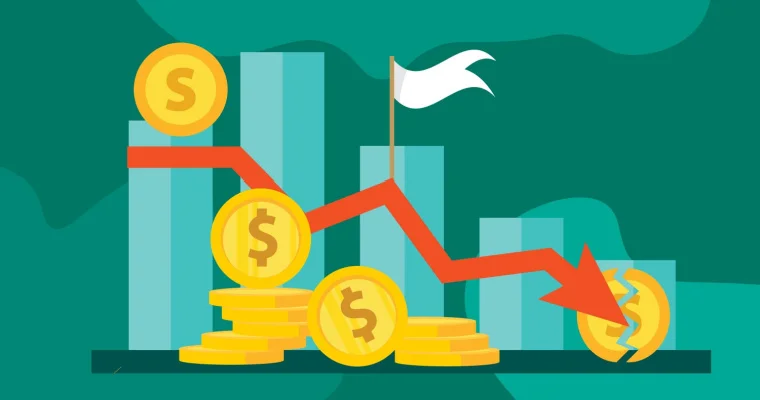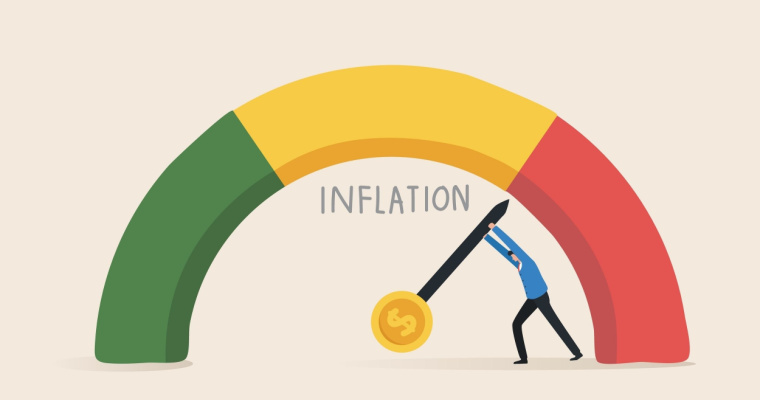What is Degree of Operating Leverage – Its Formula, Calculation and What Does It Measure

The Degree of Operating Leverage (DOL) is a financial ratio measuring the change in the operating income of a company to a change in sales. It helps predict the impact of any change in sales on company earnings. Companies or firms with a large proportion of variable costs to fixed costs have higher degrees of operating leverage and vice versa.
The Degree of Operating Leverage is also important for an investor, as it can indicate the risk of an investment and illustrates the performance of a company. Read on to learn how to calculate DOL and how different it is from financial leverage.
What is the Formula for the Degree of Operating Leverage (DOL)?
The degree of operating leverage (DOL) can be calculated using several formulas, which are as follows:
Degree of Operating Leverage = % Change in Operating Income / % Change in Sales
Or, Degree of Operating Leverage = Contribution Margin / Operating Income
Where,
- Contribution Margin = Total Sales – Total Variable Costs
Or, Degree of Operating Leverage = Q (P – V) / Q (P – V) – F
Where,
- Q = number of units
- P = price per unit
- V = variable cost per unit
- F = fixed costs
Why is the Operating Leverage Equation Important?
The calculation of operating leverage is important because it can determine the appropriate price point for covering your expenses and generating profit. It shows how businesses can effectively use fixed-cost assets like machinery, equipment, and warehousing to generate profit. In addition, if fixed assets gain more profits, operating leverage will improve.
How to Calculate the Degree of Operating Leverage (DOL)?
To calculate the degree of operating leverage, you can follow the steps below:
- Step 1: Calculate the percent change in operating income or EBIT
To calculate Earnings Before Interest & Taxes (EBIT), subtract the operating expense from sales. Similarly, while calculating the percentage change, divide the operating income by the opening income and then multiply by 100 to get a percentage value. - Step 2: Calculate the percentage change in sales.
The calculation of percentage change in sales is similar to the first step. Here, divide the given sale value by the opening sales and multiply by 100 to achieve the percentage. - Step 3: Divide the percentage change in operating income or EBIT by the percentage change in sales
Lastly, calculate DOL after getting the results from the above two steps. Here, you have to divide the change in operating income or EBIT by the change in sales.
Example of How to Use Degree of Operating Leverage (DOL)
An example to show the use of a degree of operating leverage (DOL) is as follows:
Example:
The management of XYZ Ltd. wants to calculate the current degree of operating leverage of its company. This company sells 10000 units of a product at an average price of Rs.50. Here, the variable cost per unit is Rs.12, while the total fixed cost is Rs.1,00,000.
Solution:
The degree of operating leverage of XYZ Ltd. is:
Degree of Operating Leverage = {10000 x (50 – 12)} / [{10000 x (50 – 12)} – 100000] = 1.38%
This indicates that for every 1% change in the sale of this company, the operating income will change by 1.38%
What Are the Highs and Lows in the Degree of Operating Leverage (DOL)?
A company’s degree of operating leverage can either be high or low.
A higher degree of operating leverage means that a business has a high proportion of the fixed cost. This may result in a rise in operating income due to increasing sales. However, it also indicates a higher operational risk for a business.
Similarly, a lower degree of operating leverage indicates that a business has a higher cost of variable ratio. Companies with low DOL will have low fixed expenses and more variable costs, which increases the operating profits.
To determine whether your business has a high or a low DOL, examine your organisation’s performance compared to other organisations. However, you should not be referring to every industry as some might have higher fixed costs than other industries.
What Are the Differences Between Operating Leverage and Financial Leverage?
Here are the differences between the two types of leverage ratios:
| Operating Leverage | Financial Leverage |
| Operating leverage indicates the structural planning of a company’s cost. | Financial leverage is the amount of debt a company has to finance its operations. |
| It measures operating risk of a business. | It measures operating risk of a business. |
| Degree of operating leverage is usually higher than the break-even point. | Degree of financial leverage has a direct relationship to the liability of the balance sheet. |
| This measures the impact of fixed operating costs or fixed working expenses. | This measures the impact of interest expense or interest cost. |
| DOL = % Change in EBIT / % Change in Sales | DFL = % Change in EPS / % Change in EBIT |
| Operating leverage is deduced with regard to EBIT and sales. | Financial leverage is deduced with regard to EBIT and Earnings Per Share (EPS). |
Final Word
If you have a small business, you must calculate the degree of operating leverage to maintain the bookkeeping of transactions. This will ensure periodic checking of DOL to make sure it is not changing. However, in DOL, the derived proportion of sales only works with a limited range, which may become a problem. If sales increase beyond this limit, a business may increase its production resulting in a rise in the fixed cost structure.
FAQs
Ans: Yes, a company can have negative operating leverage. However, a negative DOL shows that a company is unable to produce enough revenue to meet costs.
Ans: A higher degree of operating leverage is always better than a lower one. Any company with a high DOL will be able to earn large profits on each increment sale. However, if the company experiences low sales, then a low DOL will be easier.
Ans: As per experts, 1.1% of operating leverage is considered good for a company. The percentage here means that for a 1% change in sales, the operating leverage changes by 1.1%. As this number is close to 1, it indicates a safer company.
Ans: Operating leverage and financial leverage can be both positively or negatively related. This relation depends on the underlying parameters that drive the operating income changes. Moreover, these two types of leverages can also be unrelated in certain cases.
Disclaimer
This article is solely for educational purposes. Navi doesn't take any responsibility for the information or claims made in the blog.

Customer’s Feedback
No comments found.What is Primary Deficit? – Example, Formula & Measures
What is a Primary Deficit? Primary Deficit is the difference between the current year’s fiscal... Read More »What is Financial Ratio Analysis? – Objectives, Types and Uses
Ratio analysis is a process that allows people to assess the financial health of a company. Using t... Read More »Treasury Management – Its Functions, Types and Benefits
Even the most well-funded business can run into huge losses if it does not have the resources to fu... Read More »How Anti Money Laundering Combats Financial Crime?
Anti Money Laundering (AML) is a system of rules, laws, regulations, and procedures that financial ... Read More »What is Salvage Value and Why is it Useful?
Salvage value, also called scrap value, is the value of a specific asset after its useful life. In ... Read More »Key Difference Between Factoring and Forfaiting in Trade Finance
Factoring and forfaiting have grown in prominence as major sources of export financing. For the uni... Read More »What is Factoring and its Importance in Financial Management?
Factoring is a practice in which a company buys the accounts receivable of another company at a dis... Read More »What is Budget Surplus: Its Effects, Advantages and Impact with Examples
When the revenue of a government, business, or individual exceeds its expenses in a given period, i... Read More »What is Balanced Budget – Components, Importance and Examples
In financial planning or the budgeting process, a balanced budget is one in which total anticipated... Read More »What Does Inflationary Gap Mean in Macroeconomics?
In macroeconomics, the difference between current and potential GDP is known as a gap. This gap is ... Read More »What is Accounting Conservatism in Finance and How Does it Work?
Accounting conservatism involves a conservative set of accounting guidelines wherein the worst-case... Read More »Multiple Linear Regression (MLP) – Uses, Formula and Examples
Various statistical models help in establishing a relationship between different variables. Multipl... Read More »Top 10 Chit Fund Schemes in India in 2023
Chit funds are one of the most popular return-generating saving schemes in India. It is a financial... Read More »10 Best Gold ETFs in India to Invest in April 2023
Gold ETFs or Gold Exchange Traded Funds are passively managed funds that track the price of physica... Read More »10 Best Demat Accounts in India for Beginners in 2023
Creation of Demat accounts revolutionised the way trades were conducted at the stock exchanges. It... Read More »20 Best Index Funds to Invest in India in April 2023
What is an Index Fund? An index fund is a type of mutual fund or exchange-traded fund (ETF) that... Read More »Best Arbitrage Mutual Funds to Invest in India in April 2023
Arbitrage funds are hybrid mutual fund schemes that aim to make low-risk profits by buying and sell... Read More »10 Best SIP Plans in India to Invest in April 2023
What is SIP? SIP or Systematic Investment Plan is a method of investing a fixed amount in ... Read More »10 Best Corporate Bond Funds in India to Invest in April 2023
Corporate bond funds are debt funds that invest at least 80% of the investment corpus in companies ... Read More »10 Best Bank for Savings Account in India [Highest Interest Rate 2023]
Savings account is a type of financial instrument offered by several banks. It lets you safely depo... Read More »






























